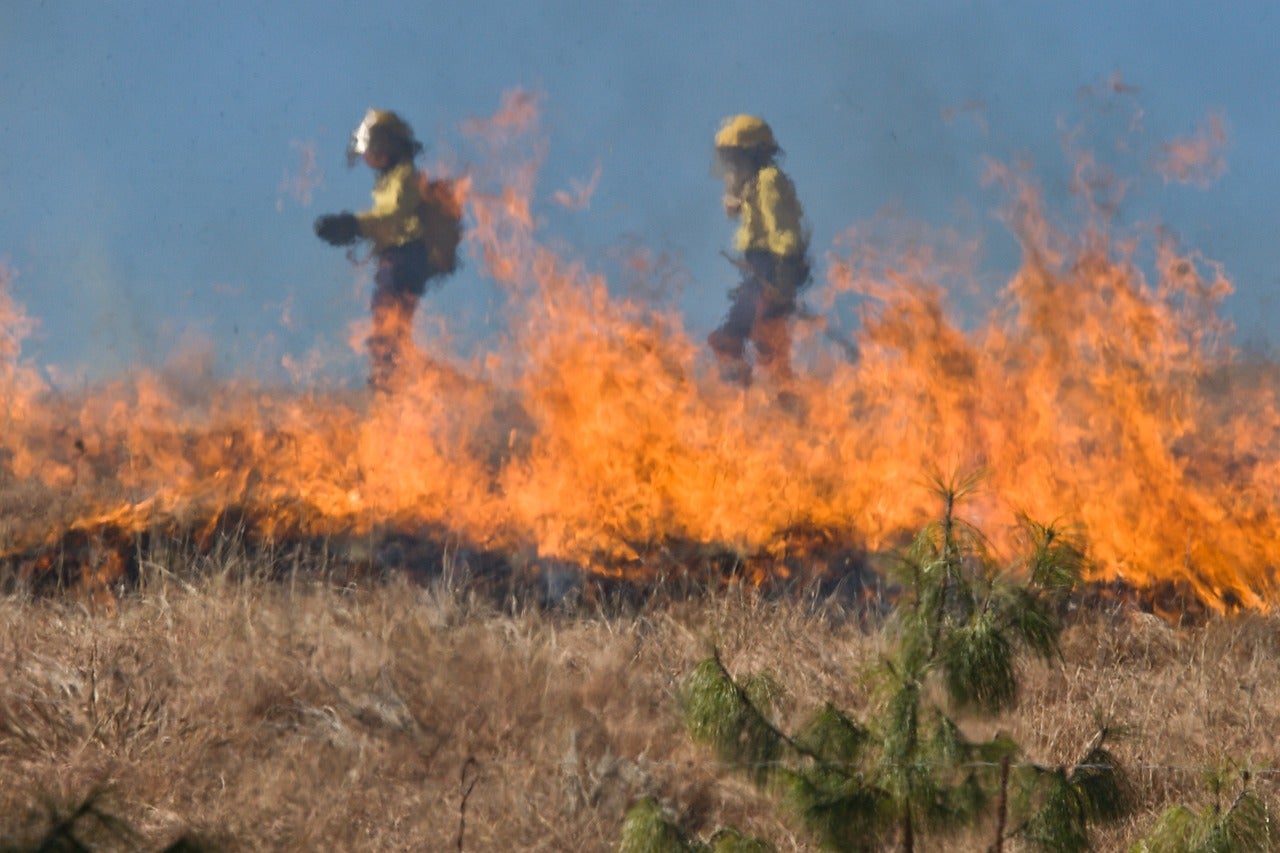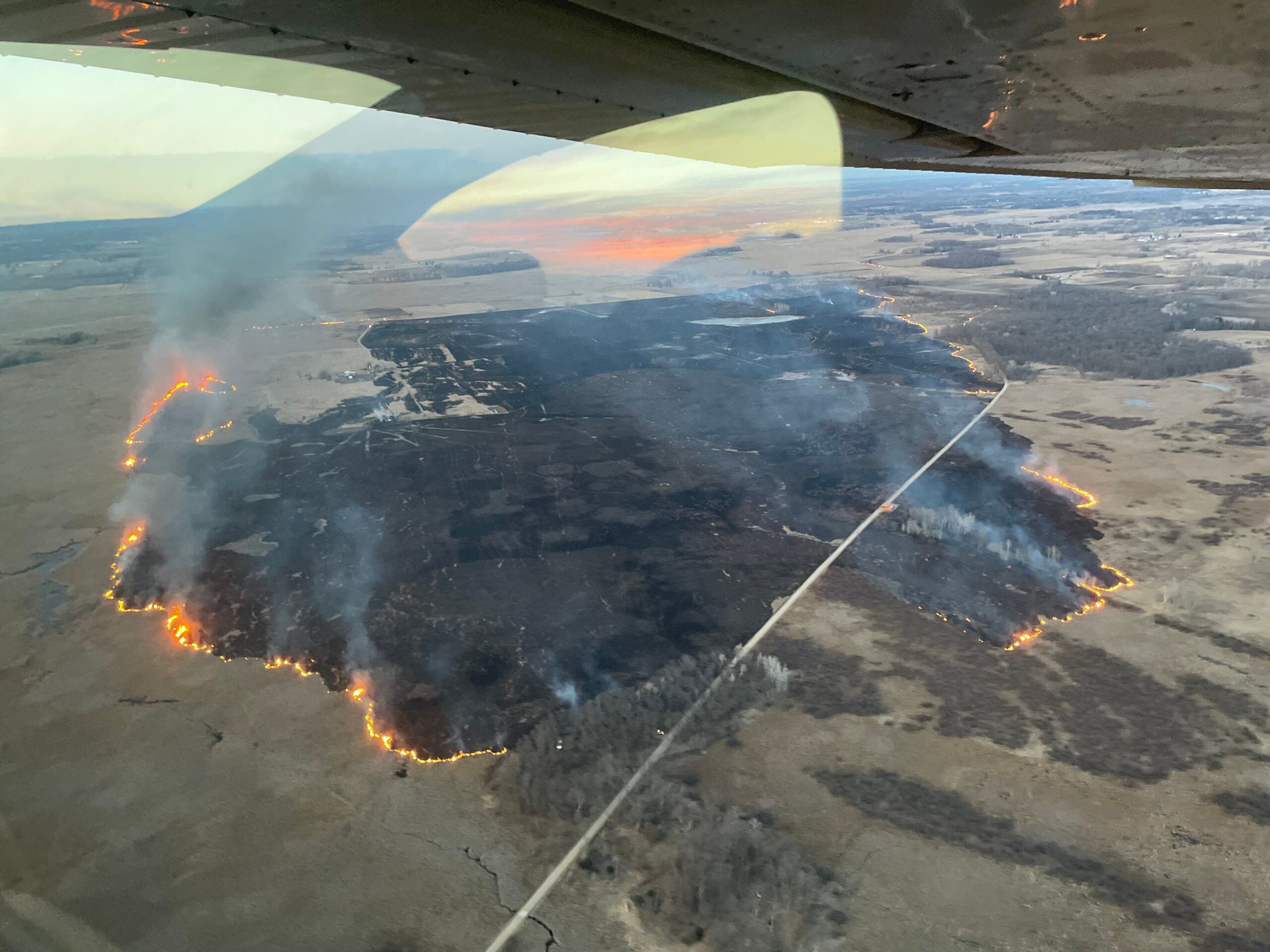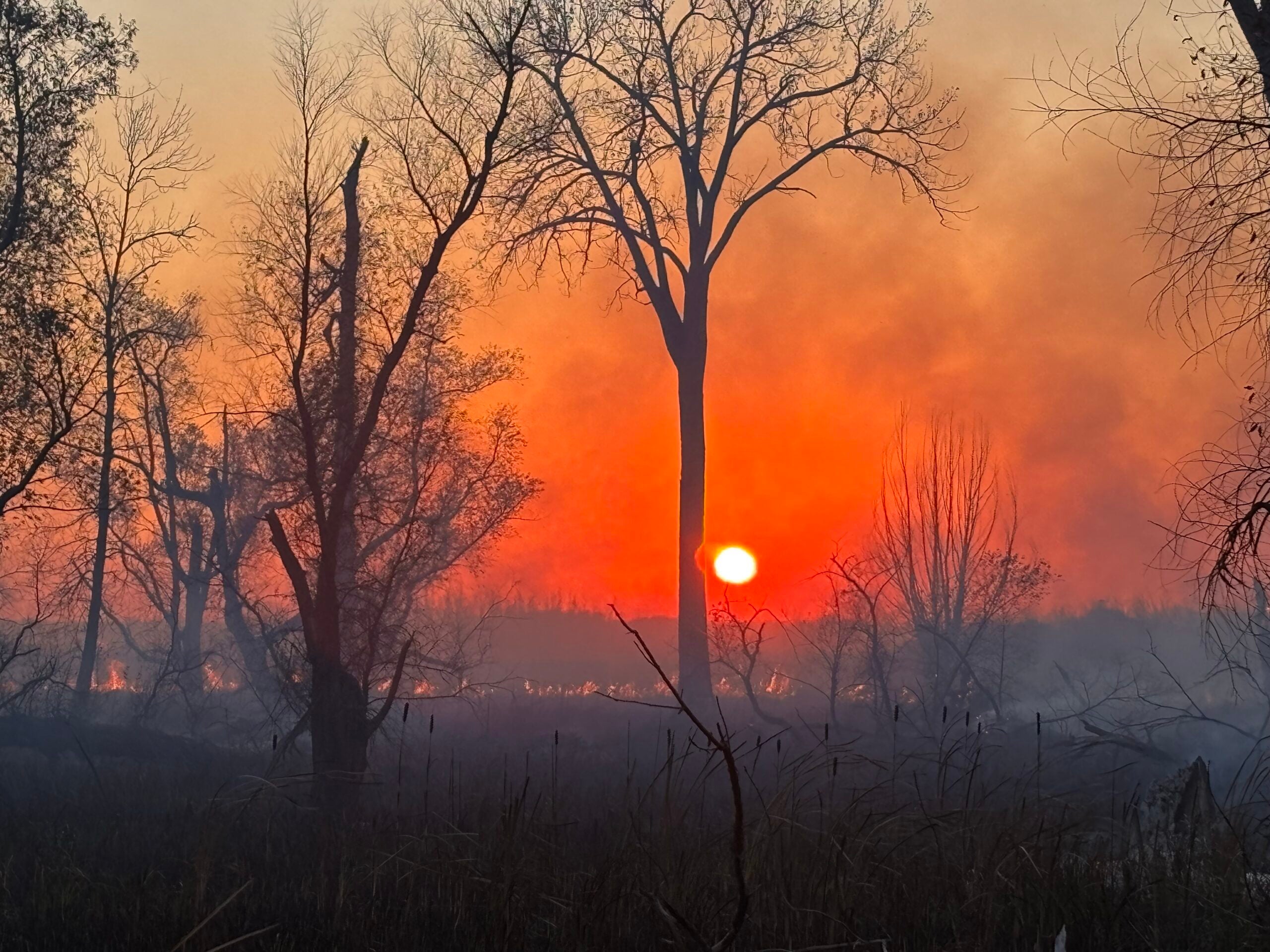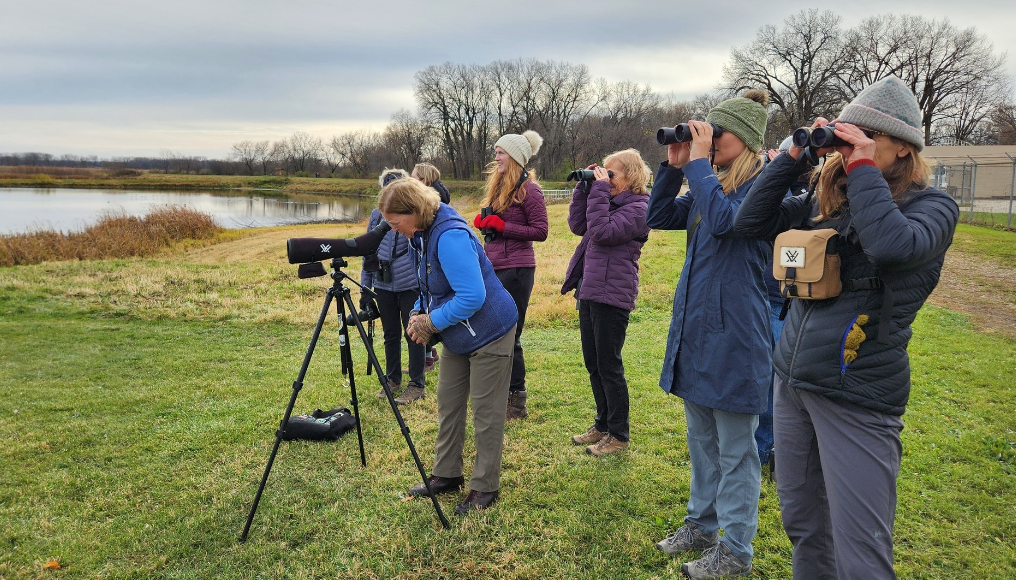State fire management crews may not be able to burn as much acreage as is typical in prescribed burns during the winter season due to the unusually warm weather.
As of Friday afternoon, crews with the Wisconsin Department of Natural Resources burned 167 acres of land in pine barrens, dry prairies and cattail marshes. The window of opportunity for these typical winter burns may close earlier than normal.
Michele Witecha, prescribed fire specialist for the DNR, said the department burns roughly 25,000 to 30,000 acres a year. She says her team is in a constant state of flux.
Stay informed on the latest news
Sign up for WPR’s email newsletter.
“It’s all depending on what the weather tell us,” Witecha said.
Planned burns typically happen in the winter and spring months to promote ecosystem restoration and maintenance and are calculated to happen under certain weather conditions, factoring in humidity, temperature and wind.
Witecha compared prescribed burns to a doctor prescribing a patient medicine.
“We prescribe these fires based on what we want to accomplish within a certain time period under certain weather conditions that will give us the effect that we’re striving for safely,” she said.
Ecosystem restoration and maintenance
Prescribed burns remove layers of dead vegetation to help plants grow in the spring.
“In the spring we can have the entire seed bed active, we can stimulate the growth of warm season grasses and we can also really stimulate the growth of wildflower species,” Witecha said.
Burned vegetation is a natural fertilizer that is reabsorbed into the soil. Clearing vegetation by fire allows for light to hit the forest floor so things like pine and oak trees can grow. Recently burned land also allows wildlife to forage and evade predators, which can benefit hunters and bird watchers.
“You’re going to see birds at those recently burned sites because that’s where all of the insects are. That’s where all of the wildflowers are that attracts those insects,” Witecha said.
Burning needed on private land
The DNR partners with organizations including the Wisconsin Prescribed Fire Council, The Nature Conservancy and Pheasants Forever to coordinate efforts across state and private lands.
Marty Moses, Wisconsin State Coordinator for Pheasants Forever, manages a team of 18 biologists who restore wetlands and prairies using prescribed fire. He is interested in seeing how the shifting burn schedule will affect ecosystems.
“(With) an opportunity to do a burn earlier in the season, we will have an opportunity to kill a lot of the early growth of garlic mustard,” he said, “a really pervasive, common weed everywhere.”
Roughly 80 percent of land in Wisconsin is privately owned. Pheasants Forever is able to help ecosystems in ways the DNR can’t. Moses said the more opportunities to work with private landowners, the better.
“Wildlife habitat doesn’t know boundaries,” Moses said. “It just provides an opportunity for a more broad landscape scale approach.”
John Schwingel, Wisconsin Business Unit Fire Manager for The Nature Conservancy, said prescribed fire used by indigenous peoples permanently influenced the landscape and ecology of Wisconsin. He is working to increase the pace and scale of prescribed fire throughout the state.
“Certain things are happening that are putting various species in peril. We need to bring fire back in order to either preserve, maintain, or restore these landscapes,” Schwingel said.
Wisconsin Public Radio, © Copyright 2025, Board of Regents of the University of Wisconsin System and Wisconsin Educational Communications Board.




